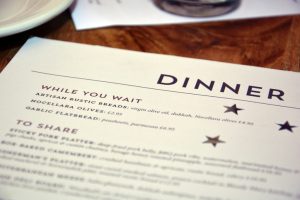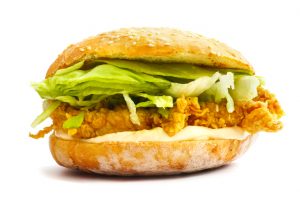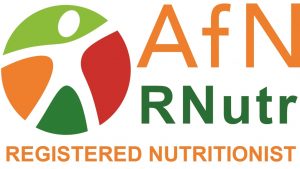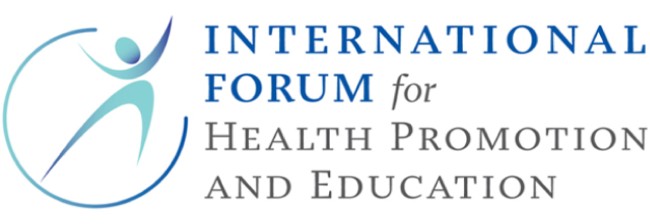
It’s been a year since UK Government proposals to reverse the growing obesity problem put the focus on the calories in foods eaten away from home. On average, Europeans eat one-fifth of meals outside the home.
Those of us travelling for business regularly eat all our meals away from home. Making information available and visible, with calories per portion, is very useful. Obviously, in the home setting, this information isn’t available, although we do have a better knowledge of the ingredients if we eat home cooked food. Some worry that we will be too calorie conscious if every food item we come across is labelled with calories. Personally, I find the knowledge useful and it certainly affects the choices we make.
Calorie Content Can Be Surprising

We might reasonably expect a fast food double cheeseburger to have the 445kcal listed, but be surprised to know that the grilled chicken burger with mozzarella and salad is 500kcal.
Recently, I was shocked when I studied the very faint print calorie information in a coffee chain, to see that the Bakewell Slice I fancied was 467kcal. When I checked the same item at a different chain, it had the same massive calorie hit. These tasty treats are now sadly off my morning coffee treat list. The healthy looking muesli bar at closer to 280kcal is the better choice.
Counting the Calories from the Menu
Many large food outlets print the calorie content of meals on the menu, and others say that the information is available on request. The labelling confusion for consumers buying supermarket ready meals is generally less of a problem with café food. Portion sizes on ‘sharing’ packs can be difficult to decipher and consumers report that there is a lack of consistency in nutrition labelling.
The labelling on a regular takeaway sandwich is much easier to navigate. At a glance, we can choose between the Coronation chicken sandwich at over 500kcal or the egg and cress at around 380kcal. But what about a takeaway pizza, it’s more difficult to give and take advice about what portion we should be eating. Our decisions should become easier with easy to access information. For example, Deliveroo says that it will include calorie information on its online website.
Don’t Forget the Drinks!
 Calorie information is also available for many beverages and there is also pressure to encourage alcoholic beverage suppliers to label drinks with the calorie content.
Calorie information is also available for many beverages and there is also pressure to encourage alcoholic beverage suppliers to label drinks with the calorie content.
Currently, it’s a voluntary system, with discussion taking place on whether it should become mandatory. I notice that my Sainsbury’s Prosecco contains 66kcal/100ml, but most beverages still don’t include this information. (125 ml flute of Prosecco is 83 kcal).
Size Matters
The problem for many food and beverage outlets is the cost. Large food companies can invest in providing accurate nutritional information, especially if there is little change in their core menu.
Small, privately owned cafes, takeaway outlets and even micro-breweries, don’t have the resources to pay for this type of information, especially if the ingredients in their products regularly change.
For myself, calorie information is essential for informed decision making.
© Executive Travel Vitality 2019




























